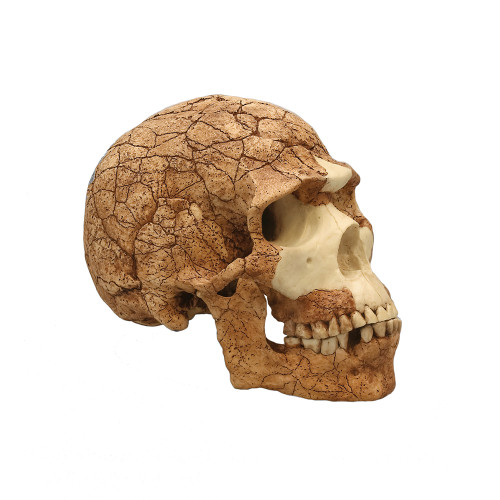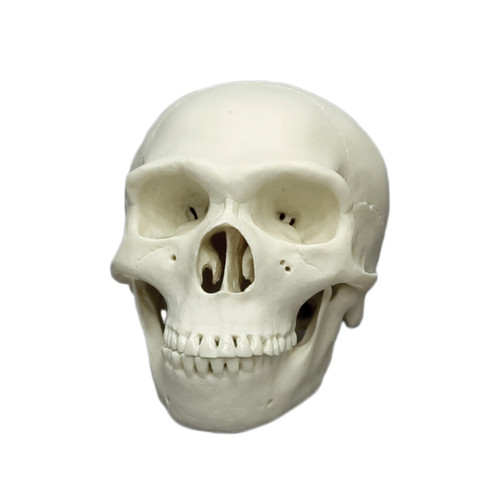Homo heidelbergensis skull Atapuerca 5 (350,000 to 500,000 years).
The Homo heidelbergensis skull Atapuerca 5 was discovered in Spain in 1992 by Juan-Luis Arsuaga, in the fossil-rich caves of Sima de los Huesos (Bone Pit), Sierra de Atapuerca.
This site has thus far yielded over 5000 fossil hominid remains.
Although somewhat smaller than other H. heidelbergensis, this individual is considered among the most complete premodern skulls ever found.
The cranial capacity is 1125cm3.
The cranial features of skulls in the Sima de los Huesos collection, including cranial capacity, overlap the ranges for H. erectus, H. neanderthalensis, and modern H. sapiens.
In fact, Atapuerca 5 shares many features with H. neanderthalensis, such as heavy brow ridges, wide nasal opening, and large, projecting middle face.
Certain features, such as the shape of the cheekbone, do not occur in Neanderthals but do in modern humans.
Notes:
- A stand is available by enquiry, sold separately







